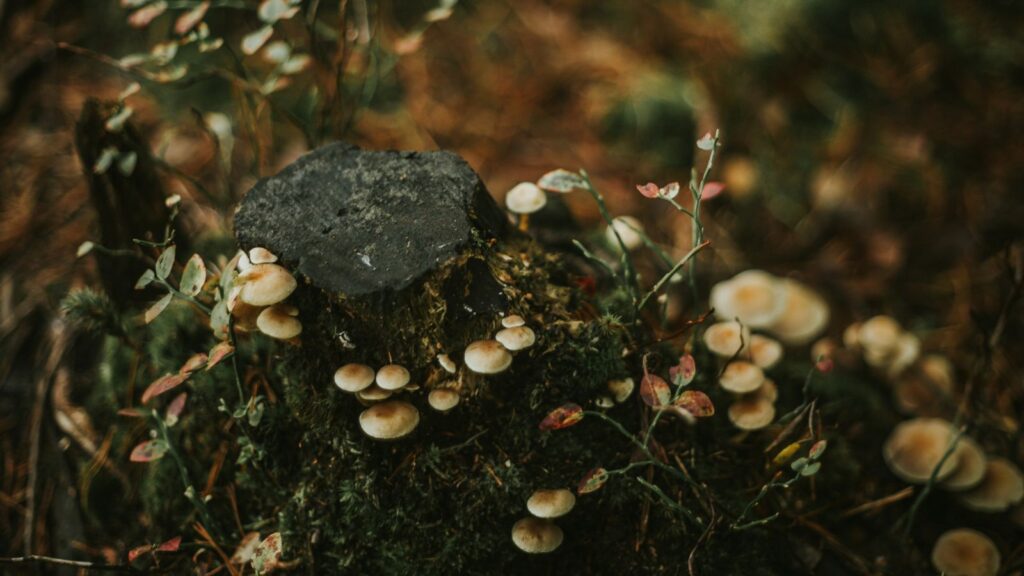In the vast expanses of birch forests, a precious resource grows in silence, largely unnoticed by the untrained eye. Chaga (Inonotus obliquus), often referred to as “nature’s black gold,” is a medicinal mushroom that has been a cornerstone of traditional medicine across various cultures for centuries. This comprehensive guide looks into the history, health benefits, and uses of Chaga, providing you with all the knowledge needed to harness its potent natural powers.
History of Chaga
Chaga’s journey through history is as rich and complex as its composition. Used for centuries by indigenous peoples of Siberia, China, and North America, Chaga was revered for its healing properties, particularly in boosting immunity and overall vitality. Shamans and traditional healers prescribed it for a plethora of ailments, from stomach diseases to heart problems, demonstrating an early understanding of its broad therapeutic potential.
Beyond its physical health benefits, Chaga holds a special place in the folklore and traditions of the cultures that have used it. In Siberia, for example, Chaga was not only a health remedy but also a symbol of endurance and survival, deeply intertwined with the identity of the people and their land. This cultural heritage adds a rich layer of meaning to Chaga, elevating it from a mere supplement to a storied element of human history.
It wasn’t until the 20th century that Chaga began to capture the attention of the Western world. Scientific research started to validate what traditional medicine had known for centuries: Chaga is a powerhouse of health-promoting compounds. Today, it continues to be studied for its potential in modern medicine, with its popularity as a superfood growing worldwide.
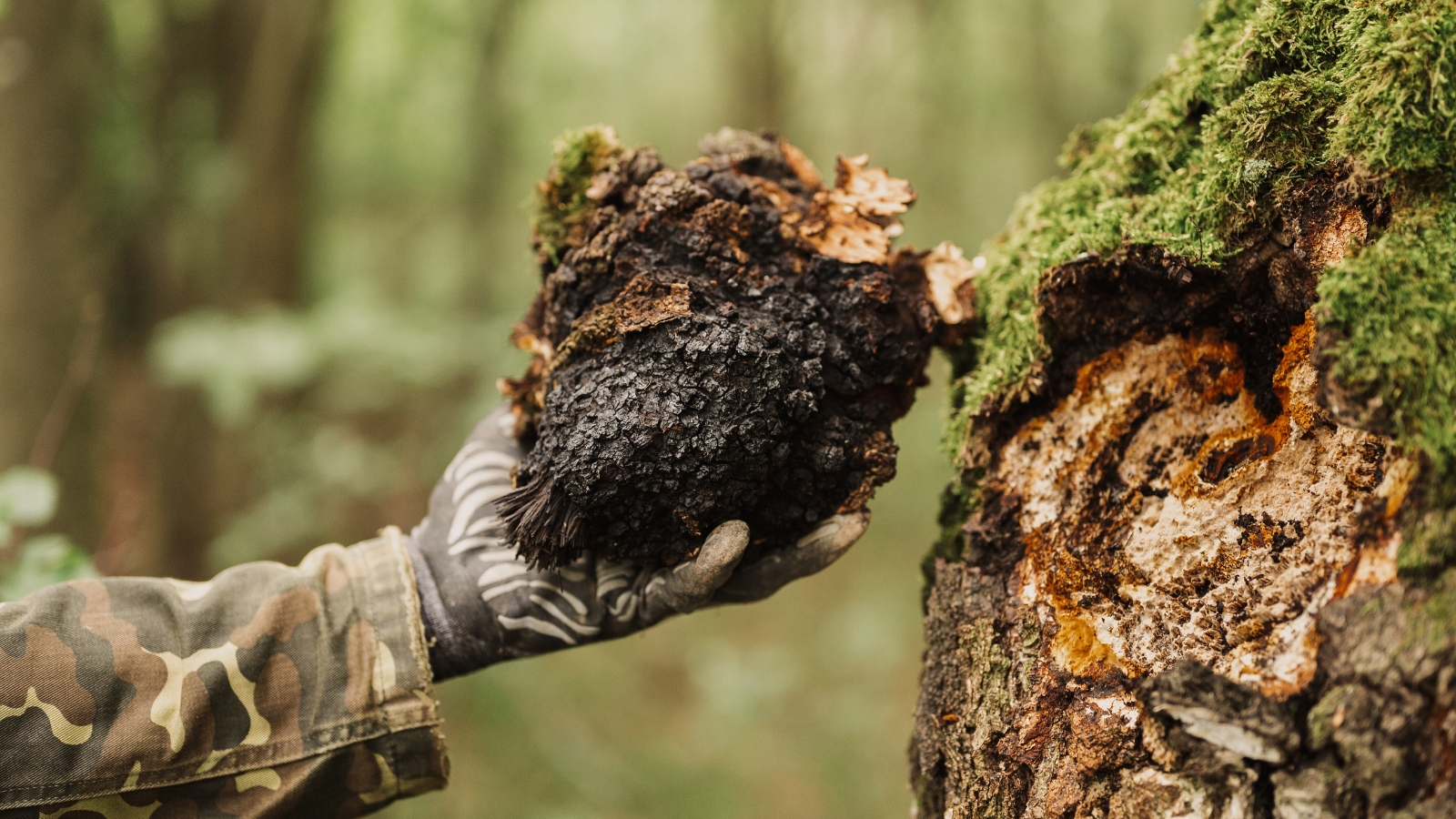
Where Does Chaga Grow
Chaga thrives in cold climates, primarily adorning the birch forests of the Northern Hemisphere. This hardy fungus has a distinctive preference for birch trees, from which it extracts nutrients, leading to its growth and the development of its potent health-promoting compounds.
The Heartlands of Chaga
The vast, snow-covered forests of Siberia, Russia, are renowned as one of the primary strongholds of Chaga, where it grows in abundance. The pristine wilderness of these areas provides the perfect conditions for Chaga to flourish, with clean air and pure water contributing to the development of its unique medicinal properties. Northern Europe, particularly Finland and Scandinavia, also boasts significant populations of Chaga, where it has been used for centuries in traditional healing practices.
North American Reserves
Across the Atlantic, the boreal forests of Canada and the northern United States serve as another critical habitat for Chaga. These regions, characterized by their cold temperatures and dense birch forests, offer an ideal environment for Chaga, allowing it to grow and thrive. The presence of Chaga in these areas underscores the mushroom’s adaptability and its role in diverse ecosystems.
Ecological Significance
Chaga’s choice of habitat is not random; it selects birch trees weakened by age or environmental stress, contributing to the natural cycle of the forest. This relationship between Chaga and birch trees highlights the intricate connections within ecosystems and the role of fungi in forest health and regeneration. By extracting nutrients from dying trees, Chaga helps to decompose and recycle organic matter, facilitating the growth of new life.
Climate and Growth Conditions
The growth of Chaga is closely tied to the climate and conditions of its environment. It requires cold weather to develop its characteristic dense, black exterior and the rich, nutrient-packed interior. The fungus typically grows on older birch trees in regions where winters are harsh and long, reflecting the resilience and endurance of Chaga in the face of environmental challenges.
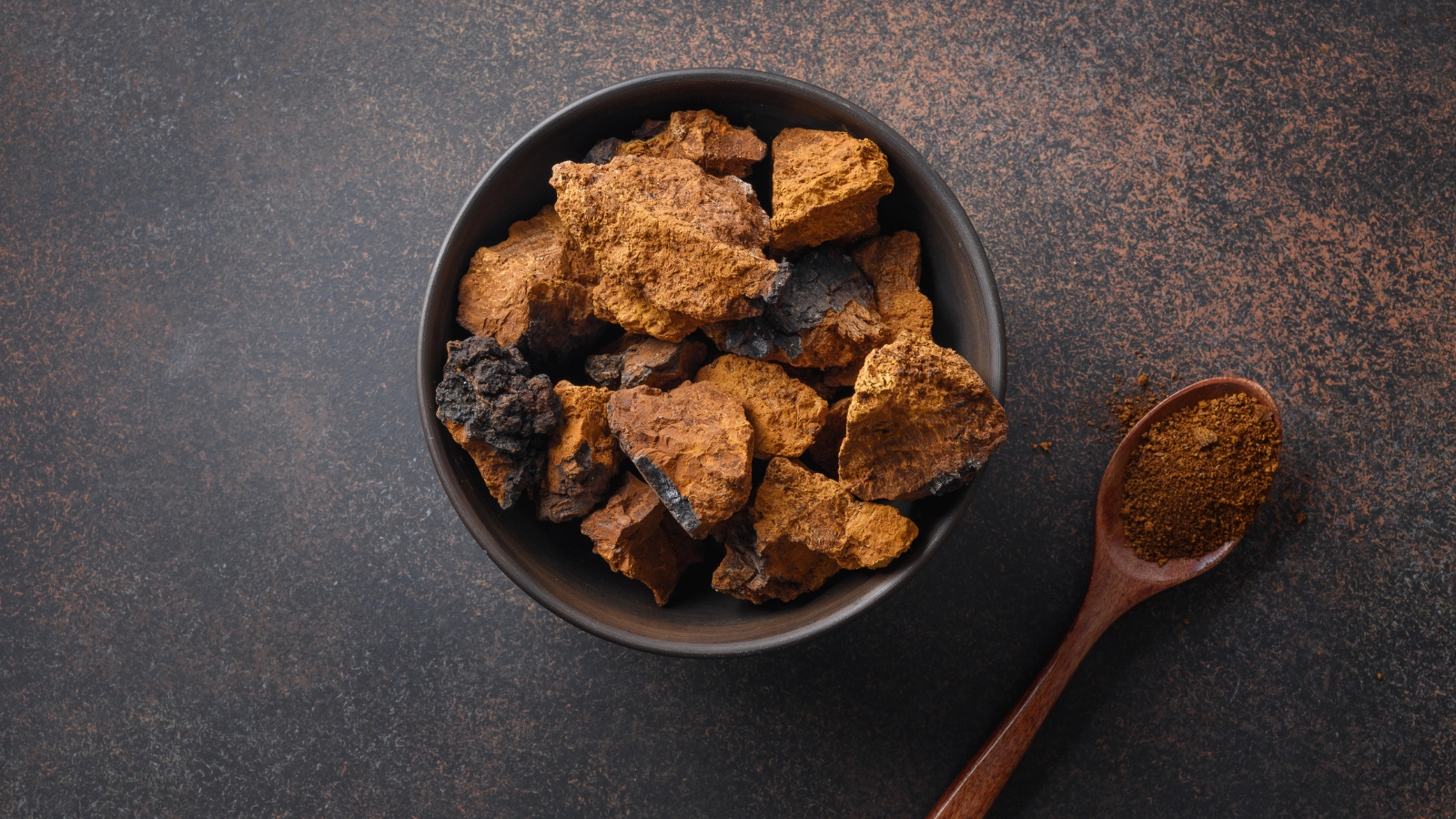
Health Benefits of Chaga
It’s no wonder Chaga is popping up in capsules, powders, mushroom coffees, and even chocolate bars. The benefits are vast, and the research supports it.
Immune System Enhancement
One of Chaga’s most celebrated benefits is its ability to bolster the immune system. Packed with antioxidants, Chaga fights oxidative stress and may reduce inflammation, which is fundamental in warding off diseases and infections.
Chaga is particularly rich in superoxide dismutase (SOD), an enzyme that provides powerful antioxidant protection, surpassing that of many other medicinal mushrooms and even some fruits and vegetables.
The high level of antioxidants found in Chaga can contribute to reduced oxidative stress, which is linked to a lower risk of chronic diseases and can slow the aging process. This makes Chaga an appealing option for those looking to naturally support their body’s resilience against the wear and tear of time.
Potential in Cancer Prevention and Treatment
Emerging research has highlighted Chaga’s potential in cancer therapy. Compounds in Chaga, such as betulinic acid, have been studied for their ability to induce apoptosis (cell death) in cancer cells without harming healthy cells, offering a beacon of hope in cancer research.
Support for Heart Health and Diabetes Management
Chaga’s impact extends to heart health by potentially lowering bad cholesterol levels, thus reducing the risk of heart disease. Additionally, its compounds may help in managing diabetes by lowering blood sugar levels, though more research is needed to understand these effects fully.
Digestive and Liver Health
The mushroom’s anti-inflammatory properties also support digestive health, soothing irritations and inflammations in the digestive tract. Moreover, Chaga is believed to promote liver health, aiding in detoxification processes.
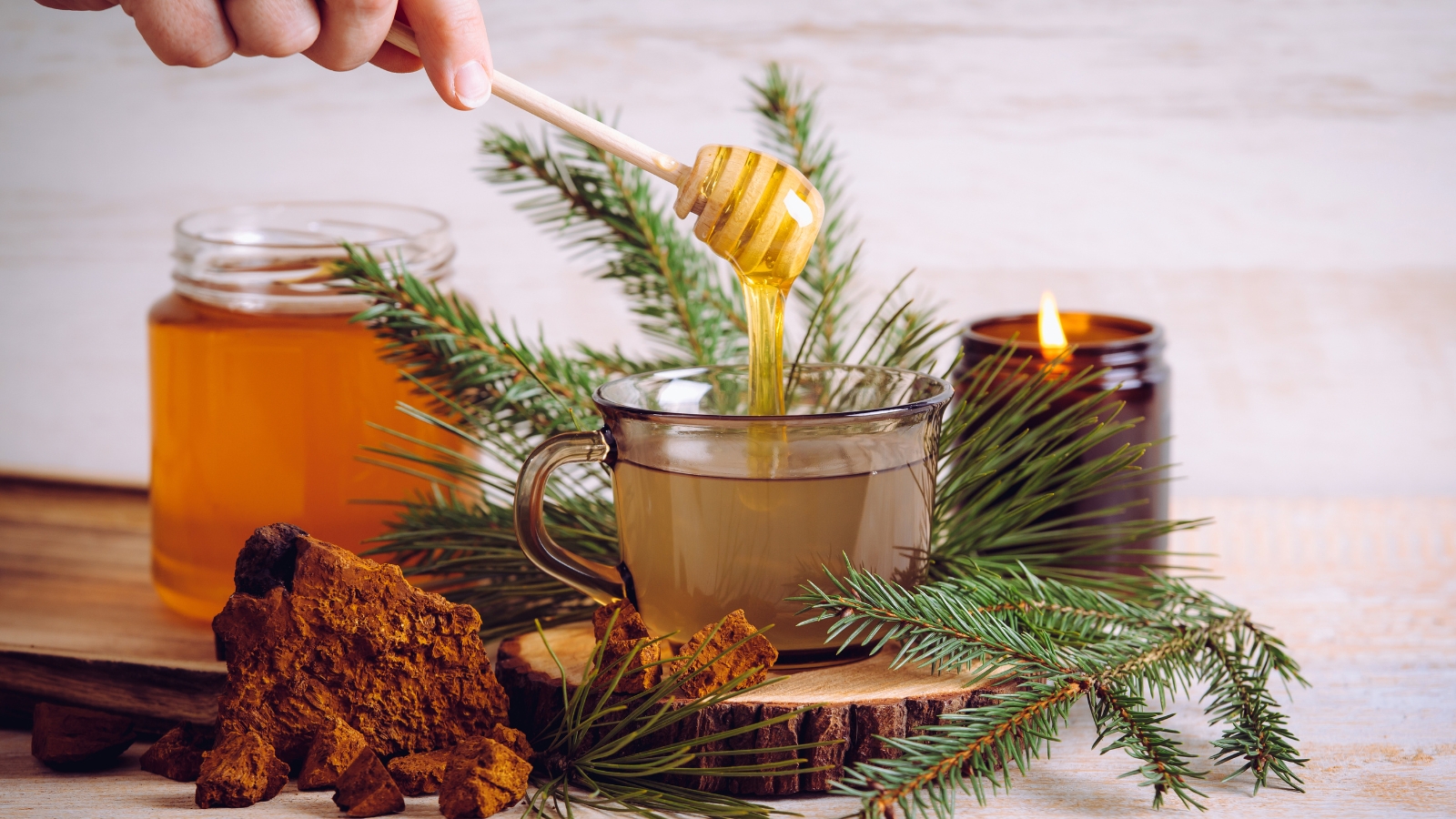
How to Use Chaga
Chaga is a versatile mushroom, offering plenty of options for every palate.
Traditional Brew: Chaga Tea
The most traditional way to consume Chaga is by brewing it into a tea. This involves simmering chunks or powder of the mushroom in hot water for several hours to extract its beneficial compounds.
Supplements and Extracts
For those seeking convenience, Chaga is also available in various forms, including capsules, tinctures, and powders. These products make it easy to incorporate Chaga into your daily routine, whether added to smoothies, coffee, or taken as a supplement.
Culinary Uses
Beyond its health applications, Chaga can be a unique culinary ingredient. Its earthy flavor lends itself well to soups, broths, and even baking, adding a nutritional boost to everyday dishes.
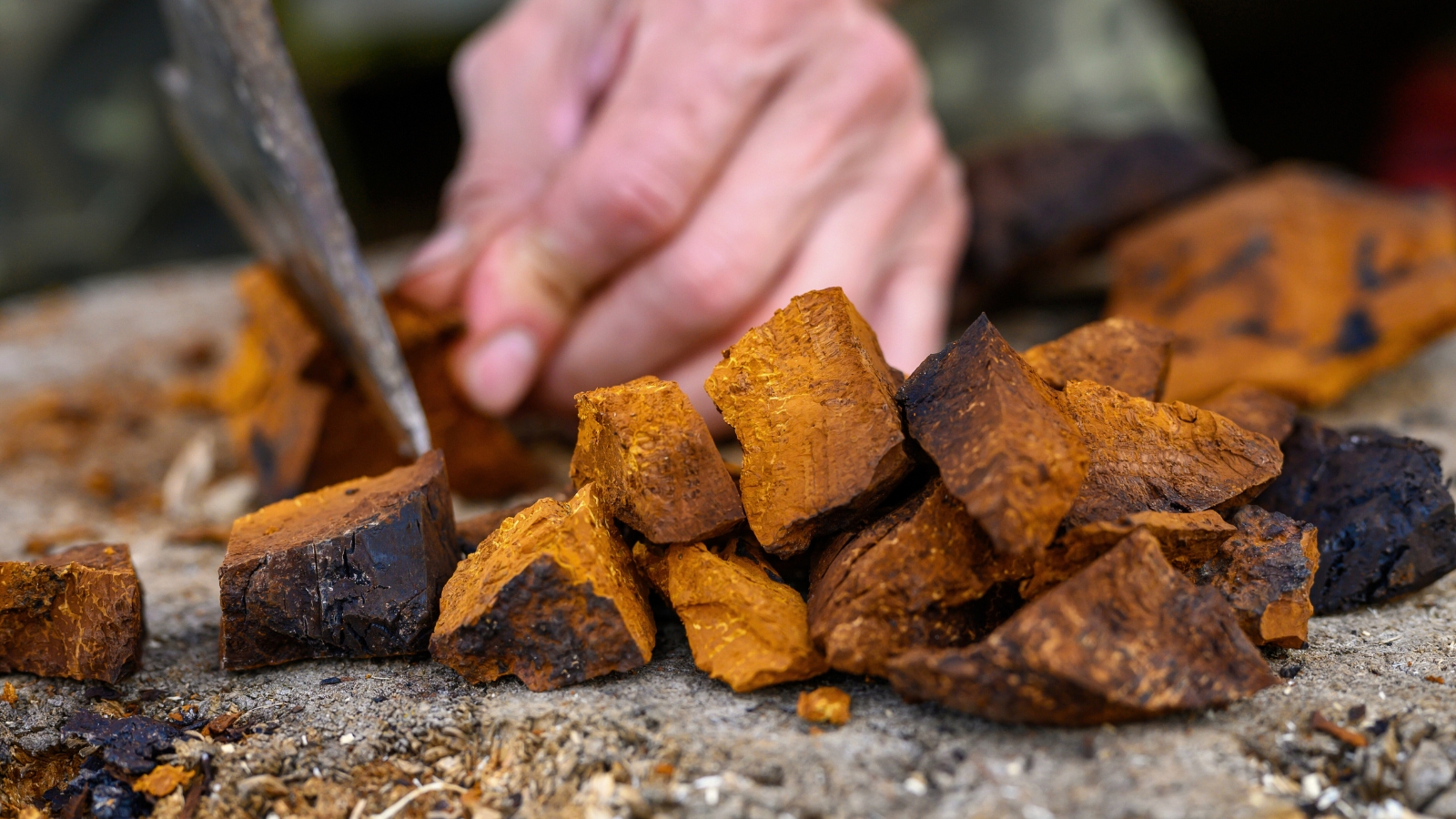
Sustainable Harvesting Practices
As Chaga grows in popularity, the importance of sustainable harvesting cannot be overstated. Chaga is a slow-growing fungus, and overharvesting can lead to its depletion and ecological imbalance in its native forests. Ethical sourcing practices ensure that Chaga can continue to be available for future generations while preserving the health of forest ecosystems.
When purchasing Chaga, look for products certified by reputable organizations that verify sustainable harvesting practices. These products often come with a guarantee that the Chaga was harvested in a way that minimizes harm to the birch trees and allows for regrowth and replenishment of the fungus.
Embracing Chaga’s Potential
Chaga offers more than just health benefits; it provides a connection to ancient wisdom, a commitment to sustainability, and an opportunity to enrich our modern lives with the power of nature. As we continue to explore and understand this remarkable mushroom, we open ourselves up to a world of potential for healing, wellness, and environmental stewardship.
This guide aims to provide a holistic overview of Chaga, empowering you with the knowledge to integrate this ancient remedy into your life thoughtfully and sustainably. Embrace the journey with Chaga, and discover the profound impact it can have on your health and the world around you.

